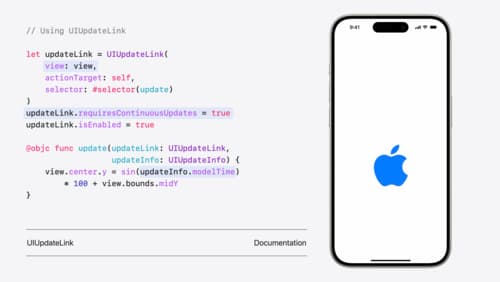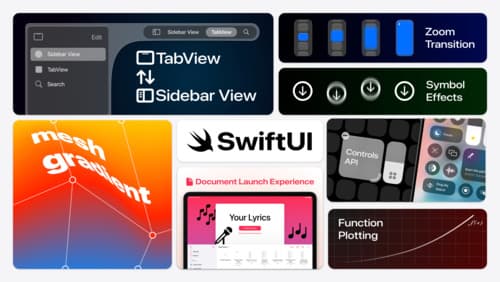Swiftui update in ios 16
Asked on 2024-10-03
1 search
In iOS 16, SwiftUI introduced several updates and improvements. Here are some of the key updates:
-
State-Driven Views: SwiftUI continues to emphasize state-driven views, automatically updating the UI when the view state changes. This reduces boilerplate code and helps eliminate update bugs. SwiftUI essentials (08:50).
-
New Graphics Capabilities: SwiftUI added new graphics capabilities, including a mix modifier for colors and extended custom shader features. This allows for precompiling shaders to avoid frame drops. What’s new in SwiftUI (15:56).
-
Scroll View Enhancements: There are new APIs for scroll views, providing more control over scroll positions and content alignment. This includes detecting view visibility changes due to scrolling, which can be used for features like auto-playing videos. What’s new in SwiftUI (16:47).
-
Swift 6 Language Mode: SwiftUI improved its APIs to support the new Swift 6 language mode, which includes compile-time data race safety. Views in SwiftUI are now implicitly isolated to the main actor by default. What’s new in SwiftUI (17:35).
-
Interoperability with UIKit: SwiftUI and UIKit interoperability was enhanced, allowing for the use of SwiftUI animations in UIKit views and vice versa. This includes using SwiftUI's animation types to animate UIKit views. What’s new in UIKit (03:05).
These updates make it easier to build fluid, interactive, and visually appealing apps using SwiftUI in iOS 16.

Platforms State of the Union
Discover the newest advancements on Apple platforms.

What’s new in UIKit
Explore everything new in UIKit, including tab and document launch experiences, transitions, and text and input changes. We’ll also discuss better-than-ever interoperability between UIKit and SwiftUI animations and gestures, as well as general improvements throughout UIKit.

What’s new in SwiftUI
Learn how you can use SwiftUI to build great apps for any Apple platform. Explore a fresh new look and feel for tabs and documents on iPadOS. Improve your window management with new windowing APIs, and gain more control over immersive spaces and volumes in your visionOS apps. We’ll also take you through other exciting refinements that help you make expressive charts, customize and layout text, and so much more.
